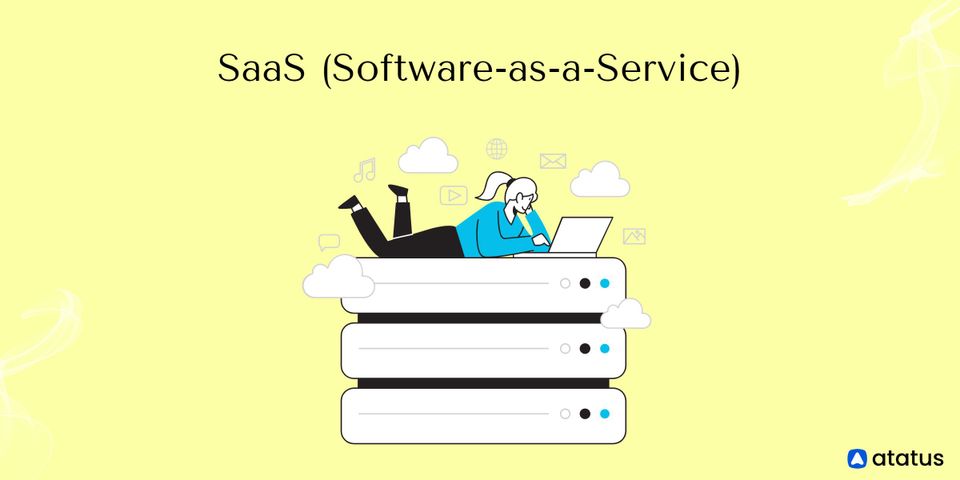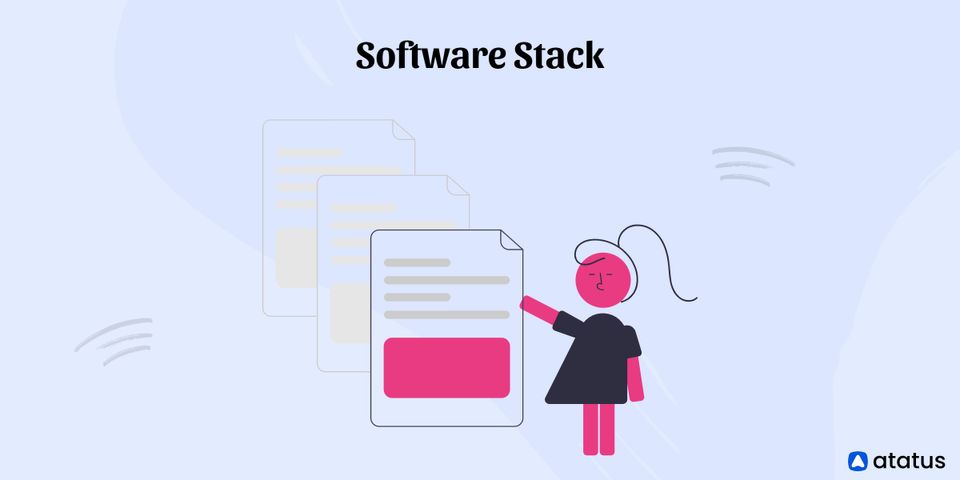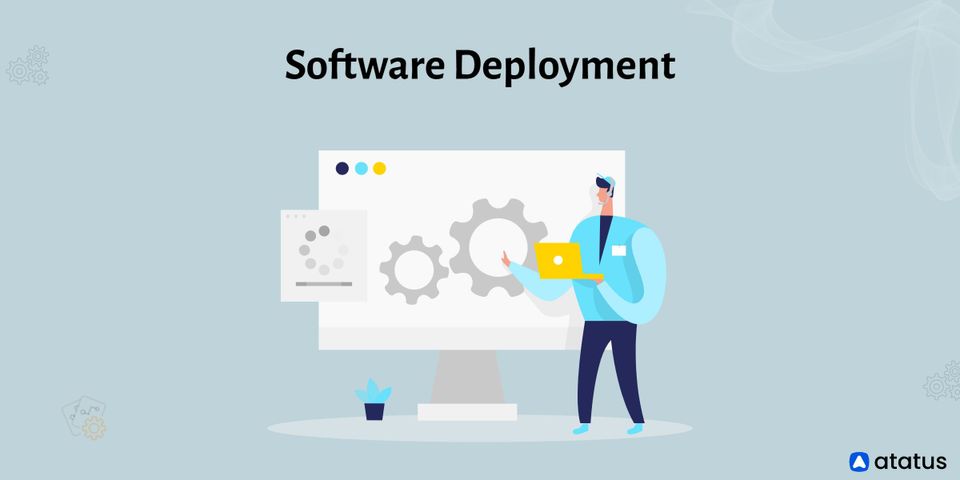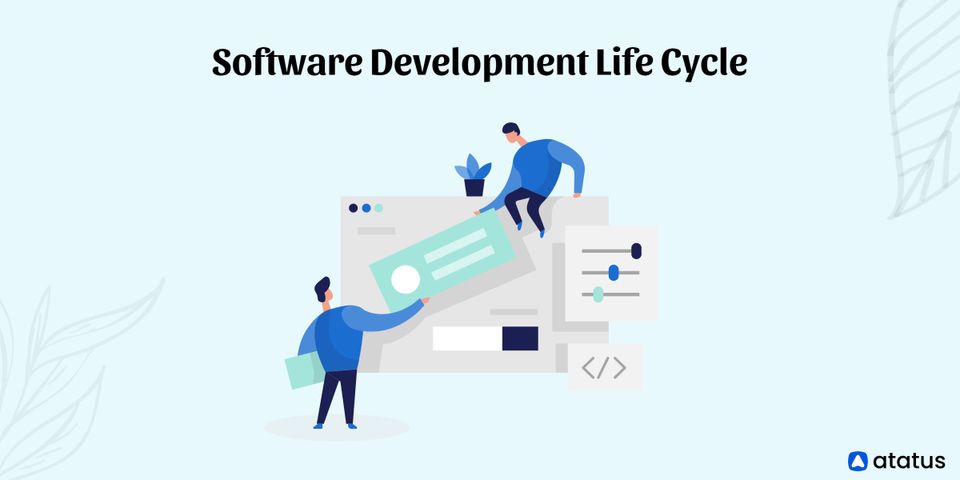In the cloud industry, software as a service (SaaS) is the most popular option for organizations. It's simple to use; all you need is an internet connection and a browser to get started. Customers don't have to depend on their in-house IT expertise because the SaaS delivery model requires vendors to handle all technical difficulties.
SaaS solutions are getting increasingly popular as businesses become more comfortable functioning in the cloud. While many end users can self-provision SaaS technologies, others require the help of a third party for integration, customization, and security.
We will go over the following:
- What is SaaS?
- SaaS Architecture
- How does SaaS work?
- Benefits of SaaS
- Challenges in SaaS
- PaaS vs IaaS vs SaaS
What is SaaS?
SaaS (Software-as-a-Service) is a software distribution model in which a cloud provider hosts applications and makes them available to end customers via the internet. In this strategy, an independent software vendor may hire a third-party cloud provider to host the application. Alternatively, the cloud provider may also be the software supplier in the case of major corporations like Microsoft.
SaaS is a complete software solution that you can rent from a cloud service provider on a pay-as-you-go basis. You rent the use of an application for your company, and your employees access it via the internet, usually through a web browser.
The service provider's data center houses all of the underlying infrastructure, middleware, application software, and application data. The service provider is in control of the hardware and software, and with the appropriate service agreement, they will ensure the application's availability and security, as well as the protection of your data.
With SaaS, your company can quickly get an application up and operating for a low upfront cost. SaaS is one of the three main types of cloud computing, along with IaaS and PaaS. SaaS applications are used by a wide range of IT professionals, commercial users, and personal users.

Netflix and other forms of personal entertainment, as well as powerful IT tools, are all available. Unlike IaaS and PaaS, SaaS products are frequently supplied to both B2B and B2C customers.
SaaS Architecture
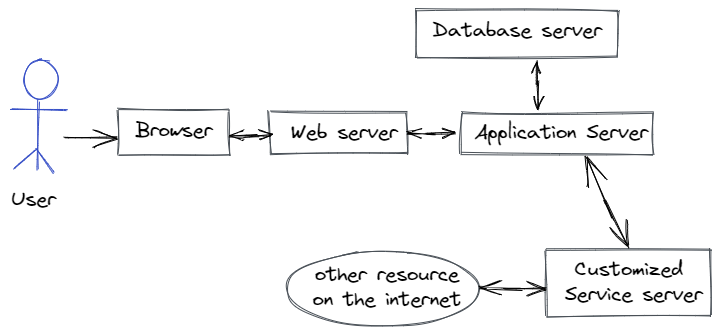
Multi-tenant SaaS applications and services are widespread, which means that each subscribing client or cloud tenant will be served by a single instance of the SaaS application running on the host servers.
The application will be used by all clients, or tenants, in the same version and configuration. Even though different subscribing customers will be running on the same cloud instance with the same architecture and platform, data from different customers will be kept separate.
Since SaaS applications are typically multi-tenant, the cloud service provider can manage maintenance, updates, and bug fixes more quickly, easily, and efficiently. Rather than needing to implement modifications in multiple instances, engineers may make critical changes for all customers by maintaining a single, shared instance.
Furthermore, multi-tenancy makes a larger pool of resources available to a broader group of users without jeopardizing critical cloud capabilities like security, performance, and privacy.
How does SaaS work?
The cloud delivery model is used for SaaS. An ISV may hire a cloud provider to host the application and related data in the provider's data center or a software provider may use its databases, networking, servers, and computing resources to host the application and related data. Any device with a network connection will be able to access the application. SaaS applications are frequently accessed through web browsers.
As a result, companies that use SaaS applications are not responsible for the software's setup and maintenance. Users merely pay a monthly charge to receive access to the software, which is a fully functional solution.
The application service provider (ASP) and on-demand computing software delivery models are closely related to SaaS, in which the provider hosts the customer's software and delivers it to permitted end-users through the internet.
In the software-on-demand SaaS model, customers have network-based access to a single copy of an application that the provider created specifically for SaaS distribution. All customers have access to the same source code for the application, and as new features or functionalities are available, they are rolled out to all customers. The customer's data for each model may be stored locally, in the cloud, or both locally depending on the service-level agreement (SLA).
Using application programming interfaces (APIs), companies can combine SaaS applications with other software. For example, a company can create its software tools and link them with the SaaS product using the APIs provided by the SaaS provider.
Benefits of SaaS
Organizations no longer need to install and run applications on their computers or in their data centers due to SaaS. Hardware acquisition, provisioning, and maintenance, as well as software license, installation, and support, are all eliminated. The SaaS approach also has the following benefits:
- Flexible Payments
Customers subscribe to a SaaS solution rather than acquiring software to install or additional hardware to support it. By converting costs to recurring operating expenses, many organizations can enhance and predict their budgets. SaaS subscriptions can also be canceled at any time to avoid paying recurring costs. - Scalable Usage
Scalability is a feature of cloud services like SaaS that allows users to access more or fewer services or features depending on their needs. - Boost Your Security
Security technologies and expertise are substantially invested by SaaS vendors. - Automatic Updates
Customers can depend on a SaaS provider to automatically perform updates and patch management rather than purchasing a new software. This further reduces the workload for in-house IT staff. - Accessibility and Persistence
Since SaaS companies deliver software over the internet, users can access SaaS applications from any internet-enabled device and location. - Customization
SaaS applications are frequently customizable and can be connected with other business applications, particularly when using software from the same vendor.
Challenges in SaaS
The following are the challenges when comes to SaaS:
- Issues Beyond Customer Control
When providers have service disruptions, make unwanted modifications to service offerings, or suffer a security breach, problems might occur, all of which can have a significant impact on customers' ability to use the SaaS offering. Customers should be aware of their SaaS provider's service level agreement (SLA) and ensure that it is followed. - Users Lose Control Over Versioning
If the provider adopts a new version of an application, it will roll it out to all of its clients, whether or not they want it. This may need the organization to allocate additional training time and resources. - Difficulty Switching Vendors
Switching suppliers, as with any cloud service provider, can be difficult. When moving vendors, customers must move large amounts of data. Furthermore, some suppliers employ proprietary technologies and data types, making data movement between cloud providers much more challenging. Vendor lock-in occurs when a user is unable to simply switch service providers due to these circumstances.
PaaS vs IaaS vs SaaS
The word "as-a-Service" refers to a solution that is handled by someone else so that you can focus on what matters most, such as iterative software updates. Infrastructure-as-a-Service (IaaS) and Platform-as-a-Service (PaaS) are two more important as-a-Service possibilities in addition to SaaS.
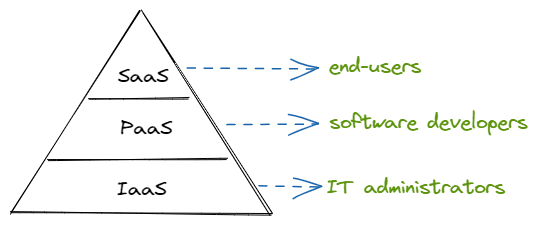
IaaS refers to a cloud-based service in which a supplier handles your infrastructure, including your servers, network, virtualization, and storage. The infrastructure is accessible to the user via an API or dashboard, and the infrastructure is rented. Users are in charge of things like the operating system, applications, and middleware, while the provider is in charge of hardware, networking, hard drives, storage, and servers, as well as outages, repairs, and hardware concerns.
PaaS is a service that offers users hardware and an application-software platform from a third-party supplier. PaaS is an ideal solution for developers and programmers because users manage their applications and services. Users can design, run, and manage their applications using PaaS instead of having to construct and maintain the infrastructure or environment that applications require.
Users of SaaS applications don't have to install software, maintain existing IT infrastructures, or deal with any other part of software management. Maintenance, upgrades, support, security, and all other aspects of software management are handled by vendors.
Conclusion
Cloud computing use is expected to skyrocket in the future, as organizations create and develop new technologies to meet that demand. Some organizations expect a resurgence of SaaS technology, with a strong emphasis on mobile devices. Other businesses are betting on artificial intelligence (AI) to take over the SaaS market in areas like logistics, transportation, and retail.
SaaS models will evolve in tandem with technology. However, ready-made and out-of-the-box equipment will always have a business place. Overall, SaaS provides a wide range of advantages that benefit both suppliers and users. Companies will continue to require qualified IT professionals capable of analyzing, evaluating, and designing cloud computing solutions that meet their current and future requirements.
Also Read:
Network Performance Management (NPM)
Monitor Your Entire Application with Atatus
Atatus is a Full Stack Observability Platform that lets you review problems as if they happened in your application. Instead of guessing why errors happen or asking users for screenshots and log dumps, Atatus lets you replay the session to quickly understand what went wrong.
We offer Application Performance Monitoring, Real User Monitoring, Server Monitoring, Logs Monitoring, Synthetic Monitoring, Uptime Monitoring, and API Analytics. It works perfectly with any application, regardless of framework, and has plugins.

Atatus can be beneficial to your business, which provides a comprehensive view of your application, including how it works, where performance bottlenecks exist, which users are most impacted, and which errors break your code for your frontend, backend, and infrastructure.
If you are not yet an Atatus customer, you can sign up for a 14-day free trial.

